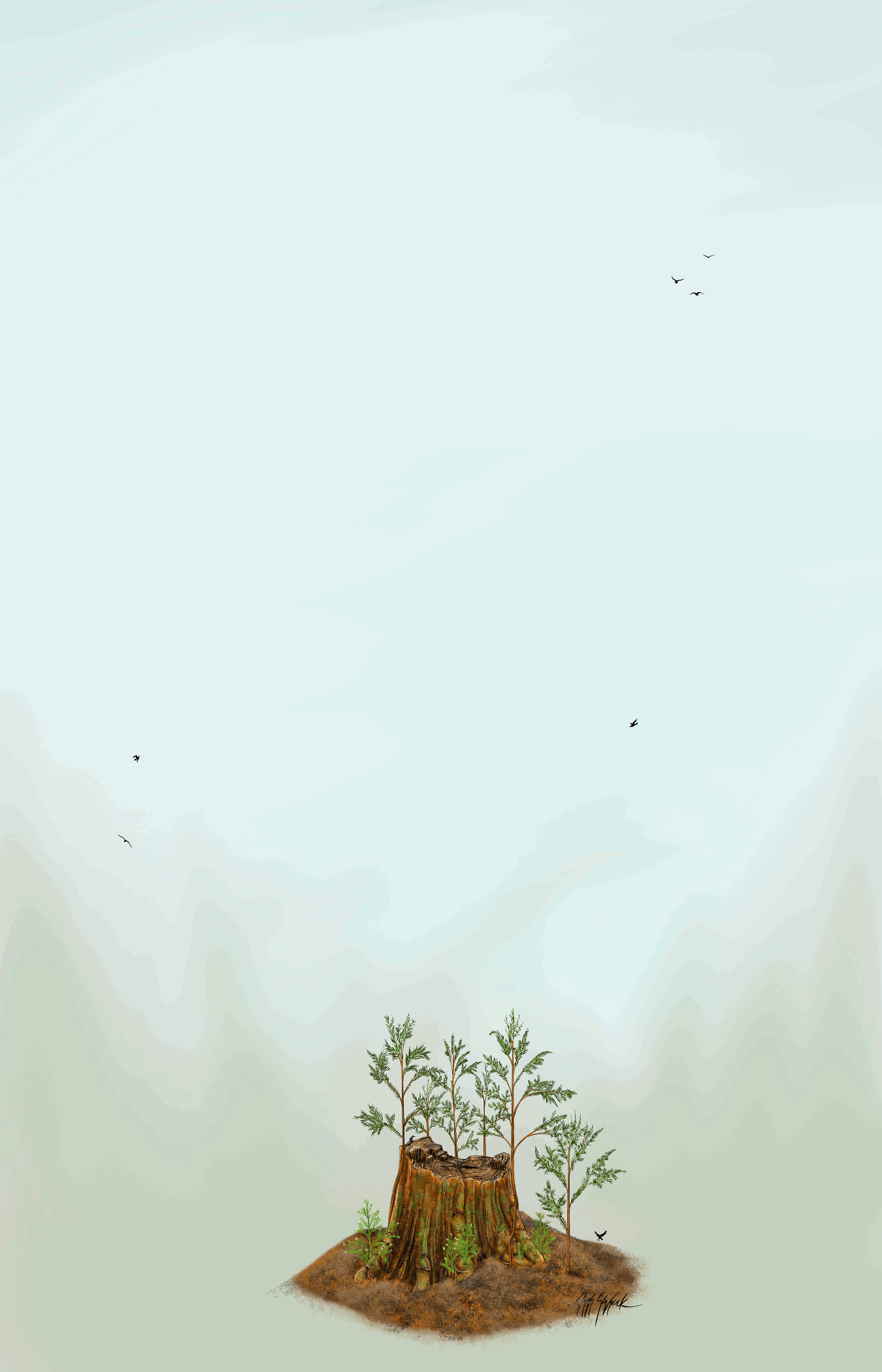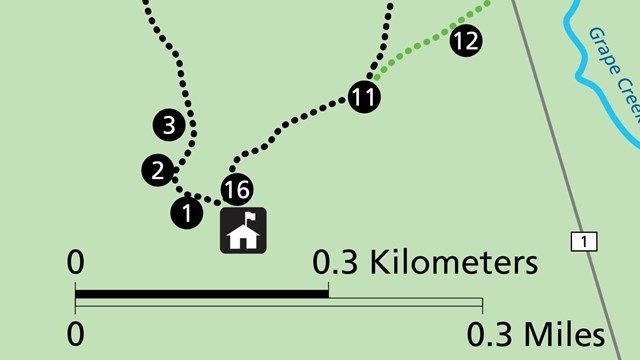
NPS/SIP: Mariah Slovacek 
Redwoods Were Once WidespreadMost people would consider the sight of a coastal redwood forest as a special event! In the Eocene when the Florissant redwoods were growing, redwood tree species were common around the globe. The band of green on this map shows where the trees were growing. This map was developed by the analysis of fossil foliage, wood, and pollen. 
Courtesy of Carnegie Institution of Washington 
NPS/SIP: Mariah Slovacek How a Family Circle FormsIf the main trunk of a redwood is damaged, the dormant stems begin growing rapidly, using the parent tree's root system for nourishment and support. Not all the stems manage to grow into a mature tree, and in this case, three grew into a family that was petrified when a lahar covered their bases. 
Stop 16: Conserving Stump P-47
The final stop of the virtual tour. 
Virtual Tour Homepage
Explanation of the virtual tour and links to all stops. 
Stop 2: Arc of Heritage
Click her to progress to the next stop. |
Last updated: December 31, 2021
